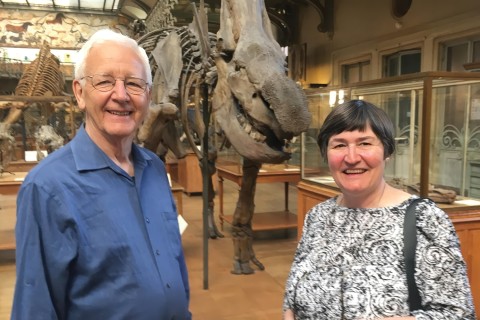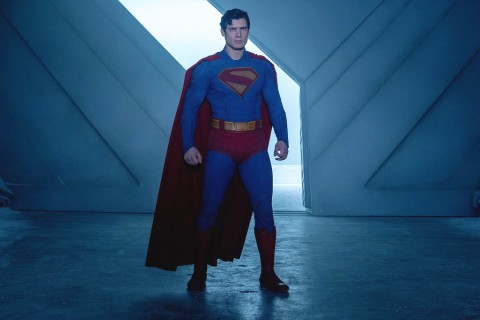Sermon in stone: A baptismal font, centuries old
I went to Lübeck, Germany, this summer to explore my recently discovered Jewish roots. My grandfather built a successful ironworks plant in Lübeck and lived there until he and my grandmother were sent to the concentration camp where he died. I wanted to visit St. Mary’s Church, where my grandparents brought my father to be baptized as a toddler. It’s the world’s highest Gothic cathedral built of brick and was almost destroyed on Palm Sunday 1942, when it was targeted in retaliation for the bombing of England’s Coventry Cathedral.
I made my way toward the 1337 bronze baptismal font, one of the oldest pieces that survived unscathed. The font was in the only roped-off area of the nave, but I found the pastor in the church offices next door, and he graciously walked with me back to the church. The font is so large that I could easily fit inside of it, albeit awkwardly, but sprinkling was clearly the preferred method in recent times. A shallow pan set on top is shaped like a sunburst, with the rays of the sunburst extending out to rest on the rim of the font. The basin itself is held up on the shoulders of three kneeling angels. I knelt down, too, in order to see the figures in relief that wrap around the font in two bands.
I hoped that the pastor could tell me more than the brochure, which said that the artist, Hans Apengeter, was renowned for his bronze work in the churches of northern Germany. “I’ve never really looked at the font,” the pastor said, “I just baptize babies here.” He’d never looked at this 14th-century masterpiece? That’s like living in New York City and not going to see the renovated Statue of Liberty. Except that the latter trip requires taking the ferry and standing in line for hours. This font is right in the center of the worship space. The pastor walks by it all the time.
The bottom band of figures portrays Adam and Eve, the temptation of Jesus, and his baptism. Between Adam and Eve and the temptation stands a very substantial devil that looks as if he’s consumed large quantities of wurst, potatoes and beer. The font describes our baptismal liturgy: we are “born children of a fallen humanity”; in baptism we renounce the devil and rejoice in a watery new birth. Jesus’ baptism is followed by a series of women whom I could not immediately identify. The pastor gamely bent down and looked at the women. “Oh,” he said, “those are—I’m not sure how you translate it—the stupid and smart girls.” Ah . . . the wise and foolish maidens. An interesting choice for the baptismal font, where candles are lit with the mandate to let our light shine.
A second ring of figures places the crucifixion squarely above Adam and Eve, with the trees of paradise and Golgotha entwined. Above the temptation comes Jesus’ descent into hell and his reaching to rescue those who have not resisted temptation. On the lower band, Jesus’ rising from the tomb parallels his rising from the Jordan. The ascension follows with a wonderful detail. As he ascends, Jesus’ feet dangle below his robes, and on the mountaintop he leaves bronze footprints. “I’m glad I looked at this!” said the pastor. Then we saw those who followed the footsteps, more or less faithfully—14 figures we determined to be apostles.
The seven wise and seven foolish maidens came into focus. They paired up perfectly with the apostles—two bands joined in dance ringing round the font. The pastor waited patiently as the font exerted its pull on me, but I knew he had things to attend to besides this sermonic lodestone.
I thought about how the pastoral steward of such a treasure could fail to pay any attention to it. Then I considered my own quarter century of ministry, both the moments when my eyes were wide open and the other times when I missed marvels right under my nose. I realized that even at that moment I was thinking about the load of work ahead rather than the wonders I’d seen during my vacation. I reconsidered the apostles dancing rings around the font with the smart and the stupid.
I laid my hand once more on the baptistery’s cool metal, wishing it were filled with water but thankful for the connection, for the heavy bronze weight of glory that survived seven centuries of wisdom and folly, that endured the assaults of evil, including the 1941 proclamation that all baptisms of Jews that occurred in the church were null and void. My father’s baptism belongs to this terrible history. It was an act of desperation, assimilation or both. Some would see it as betrayal, but for me, whatever drew my grandparents there with their son has been transmuted by mercy. My life in Christ began in this indestructible bath, and I am grateful for my place in the dance.




